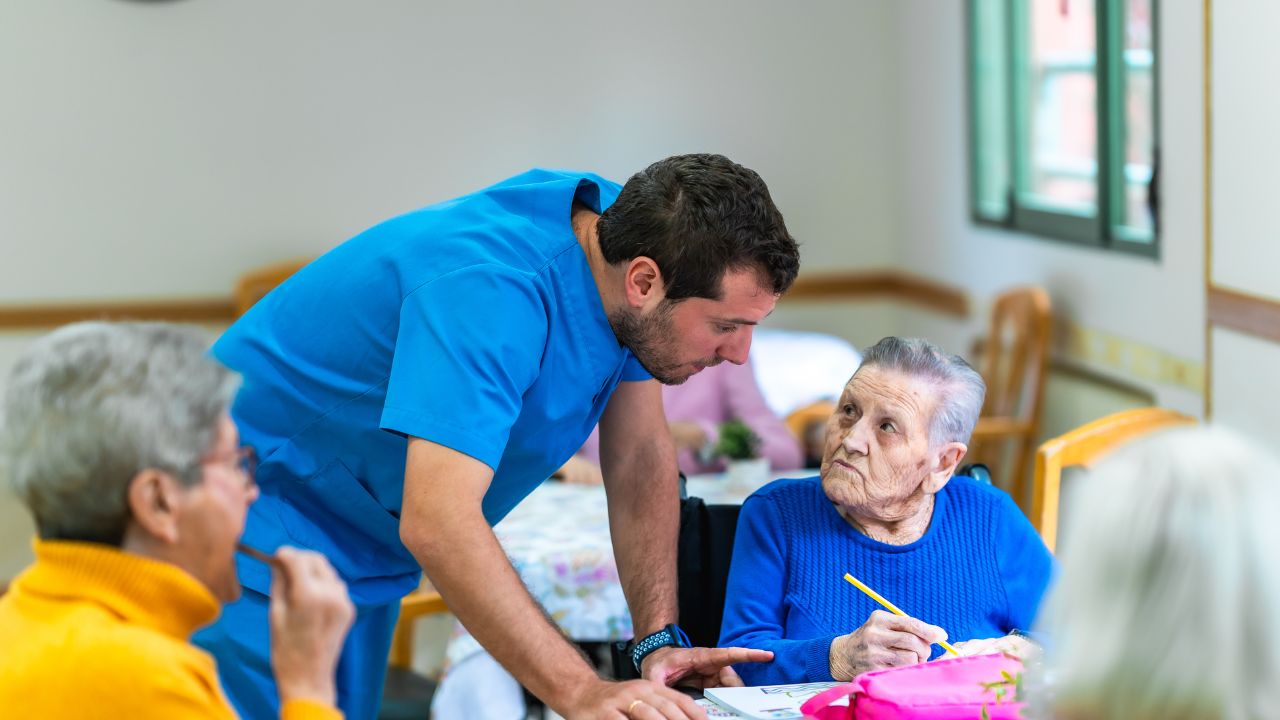If you’re considering a career in pediatric nursing, one of the first questions you’ll likely have is, “how long does it take to become a pediatric nurse?”
The answer to this question varies depending on what specific career you want to pursue and what path you take to get there. It takes longer to become a registered nurse (RN) than a licensed practical nurse (LPN), for example, and there are various nursing education programs with wildly different completion times.
So how long does it take to become a pediatric nurse?
Plenty of different combinations of formal degrees, licenses, and certifications will determine how long it takes to reach your goal of becoming a pediatric nurse. While the options feel endless, making it hard to give you a single locked-in answer, let’s look at the most common paths pediatric nurses take to start their careers.
Does It Take Longer to Become a Pediatric Nurse?

Becoming a pediatric (peds) nurse doesn’t have to take any longer than becoming a general nurse of equal licensure. While some pediatric jobs may require special training or certification, many do not. They can train you on-site if you have the required education, licensure, and certifications for the position.
In most cases, becoming a pediatric nurse doesn’t take longer than in other specialties. You can pursue pediatric certification, which involves taking an exam, but you can do this after working as a peds nurse. You can also enroll in a pediatric-focused training program, but many employers often do not require this.
Common Paths to Becoming a Pediatric Nurse & How Long They Take
Your current medical or nursing experience, your chosen educational programs, and the licensure you pursue will have the most significant impacts on how long it takes, on average, to become a pediatric nurse. Other factors—like attending classes part-time instead of full-time—can also have a significant impact.
That said, let’s discuss the most common paths to becoming a pediatric nurse and how long they take on average.
1. Becoming a Pediatric Licensed Practical Nurse
Becoming a licensed practical nurse is, all else being equal, going to be the quickest way to start as a pediatric nurse.
LPNs are the starting level of licensed nurses, and it’s a great way to get started in the career. Most LPN programs take only a year on average to complete and do not require an associate’s degree or bachelor’s degree.
Once you complete your education program, you’ll take the National Council Licensure Examination for Practical Nurses (NCLEX-PN) exam. Some nurses study for a month or so after completing their initial education, while others take it immediately. After you pass, you can begin working as an LPN in a pediatric facility.
2. Becoming a Pediatric Registered Nurse
If you want flexibility in where you work and higher earning potential, you’ll likely want to pursue your registered nurse licensure as a pediatric nurse. Becoming an RN often opens the door for more work opportunities, higher pay, and much more career advancement.
You can become a pediatric RN with an Associate’s Degree in Nursing (ADN), which takes an average of two years to complete. There are some accelerated programs that you may be able to complete in twelve or eighteen months instead, though this requires a full-time commitment.
There’s also the option to become an RN with a Bachelor’s of Science in Nursing (BSN), further increasing pay and work opportunities. A BSN program takes an average of three to four years to complete, but there are some accelerated programs for students, who already have experience in the medical industry or an Associate’s Degree, that may only take two years.
Once you finish your chosen degree program, you’ll take the NCLEX-RN to obtain your licensure as a registered nurse.
3. Transitioning from a CNA to a Pediatric Licensed Nurse

Are you already working as a certified nursing assistant (CNA) and want to take the next step to become a pediatric nurse?
You may have a more accelerated path to becoming either a pediatric LPN or RN, thanks to the time you’ve put into your career.
There are both CNA to LPN and CNA to RN programs available. These programs have abbreviated completion times because they’re leveraging the licensure you’ve already obtained, so you’re only learning the new skills you need instead of starting from scratch.
CNA to LPN programs can take anywhere from six months to a year and a half. CNA to RN bridge programs take a year and a half to two years to complete. Some may include a BSN degree in their program.
As with other paths to becoming a pediatric nurse, you can study in general nursing programs, obtain a general LPN or RN licensure, and then pursue pediatric positions.
4. Becoming an Advanced Practice Registered Pediatric Nurse
Are you already working as a registered nurse and want to pursue your Advanced Practice Registered Nurse (APRN) licensure?
Becoming an APRN will allow you to treat and diagnose patients under a supervising physician, meaning you get to take on a higher level of direction with a patient’s care and (you guessed it) make more money. And since there’s a shortage of pediatric nurse practitioners, it’s a good career move to consider.
You can become an APRN through a Master’s of Science in Nursing (MSN) or a Doctorate of Nursing Practice (DNP). You can choose to obtain a general nursing degree or pursue a program specializing in pediatric education.
We’ll look at DNPs in the next section, so let’s talk about obtaining your APRN licensure with an MSN. There are two typical time frames:
- Starting with your RN and BSN, it typically takes two years to finish your MSN degree. Some nurses will choose to work full-time or part-time and attend school part-time; this can extend the time frame to two to four years.
- Some programs allow practicing RNs with an ADN to enroll in “bridge” programs where they pursue their MSN without getting their BSN; these typically take two to three years.
Once you complete your education, you’ll take the AANP exam to obtain your APRN licensure.
5. Becoming a Pediatric Doctor of Nursing Practice
Your DNP is the highest level of nursing education available.
Most DNP programs require obtaining your RN license and an MSN degree. Many bridge programs, however, are open to RNs who only have a BSN degree. In addition, some programs in the latter category may not even require past work experience outside the clinical hours needed to obtain the RN license, allowing students to go directly from a conventional undergraduate program to a DNP program.
DNP programs take an average of two to four years, depending on the specific program you’ve enrolled in and whether you’re working as a nurse when you’re not attending school. Once you’ve obtained your degree, you can take the AANP exam and a DNP certification exam.
You can treat pediatric patients as a general Family Nurse Practitioner (FNP) or a Pediatric Nurse Practitioner (PNP). To obtain your Pediatric Primary Care Nurse Practitioner Certification (PPCNP), you’ll need to take the PPCNP-BC exam from the American Nurses Credentialing Center (ANCC).
Final Thoughts
While plenty of options can seem overwhelming at first glance, having so many choices for how to become a pediatric nurse is a tremendous asset to anyone considering the career path. You can start with a quick program to jump into the career or take plenty of time to get a few degrees for maximum career advancement potential.
Take some time to think about what time frame and which programs work best for you, and start there!
Want to learn more about peds as a career option? Check out our Pediatric Nursing Guide here.














